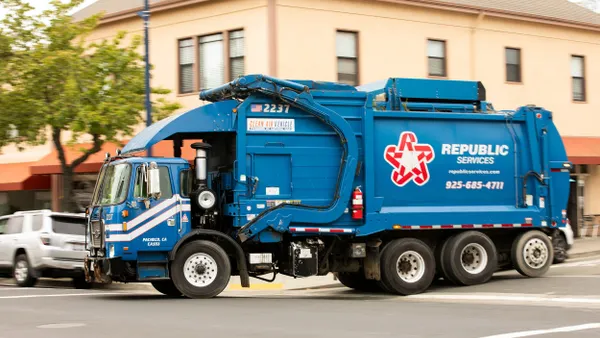Dive Brief:
- The American Forest & Paper Association (AF&PA) recently reported that 2016 paper recovery rates reached a record high of 67.2%, up from 66.8% in 2015.
- According to a separate annual survey from AF&PA, overall paper and paperboard capacity declined by 1.3% in 2016. This followed an ongoing annual decline rate of 1.3% since 2001.
- Meanwhile, containerboard capacity increased by 1.4% in 2016 to a record high. Tissue paper capacity was also up by 0.7%. A new monthly report showed the containerboard trend continuing, with production up by 4.8% in April 2017 compared to the previous year.
Dive Insight:
Continued progress on this recovery rate is a good sign for AF&PA, which has set a goal of 70% recovery by 2020. Along with broader regulatory priorities, this 2020 goal is a main focus for the industry as it's been supporting a range of educational initiatives to help drive recycling.
The ongoing shift in consumer behavior, away from newspapers and other printed materials toward more electronic mediums, is still a deep underlying issue for these efforts. In 2014, a federal checkoff program — more commonly used for food commodities — was formed to explore new markets and expand consumer awareness of paper products. The recent closure of multiple paper mills indicate that this larger trend will be a tough one to reverse.
Though expanding production (and high recovery rates) for containerboard and corrugated material remains a bright spot for the paper industry. Companies such as Pratt have been building new facilities lately and rising e-commerce demand is expected to support further growth. Demand for North American fiber, known for its high levels of virgin content, is also projected to remain stable in future years even as major buyers such as China move to source more of their recovered material domestically.











